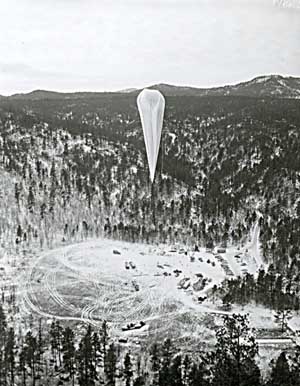|
For many years, scientists wanted to study the air above the earth. Then the Army Air Corps and the National Geographic Society got together. They built a balloon that could travel into the stratosphere. The stratosphere starts eleven miles above the earth. There are few clouds there but still enough oxygen to breathe. The air corps and the society picked a place near Rapid City to launch their balloon. It was a smooth hollow about five hundred feet deep. It was soon known as the Stratobowl. Men from the Civilian Conservation Corps and others worked hard to get the site ready. |
|
|
|

